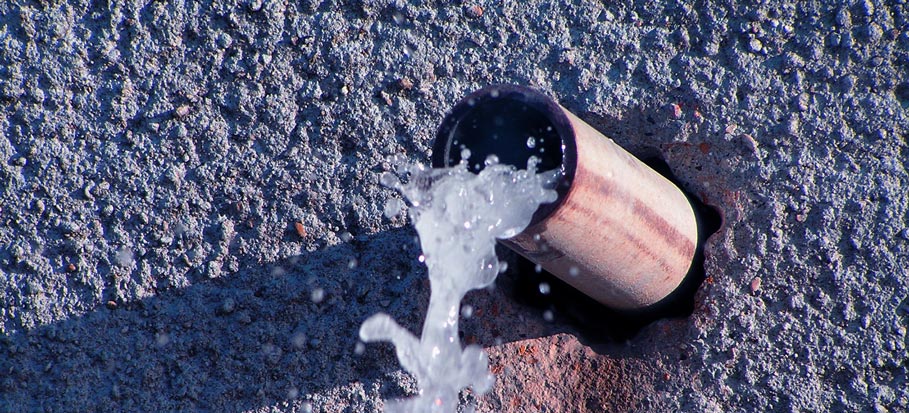Overview To Water Leak Detection At Home
Overview To Water Leak Detection At Home
Blog Article
We've come across this article involving Leaking water lines below on the web and think it made sense to talk about it with you here.

The moment you find a leakage, calling your plumber for repairs is the most effective option. Some tiny water leakages might not be noticeable. Right here are some hacks that assist if you can not discover it with your nude eyes.
Early detection of leaking water lines can minimize a prospective calamity. Besides conserving you money, it will decrease the irritation and also disappointment.
Check Water Usage
If you find abrupt changes, in spite of your intake being the exact same, it means that you have leaks in your plumbing system. An unexpected spike in your costs indicates a fast-moving leakage.
At the same time, a stable increase each month, despite having the very same practices, reveals you have a sluggish leakage that's likewise slowly intensifying. Call a plumber to thoroughly inspect your home, specifically if you feel a cozy area on your floor with piping below.
Examine and also Evaluate the Scenario
House owners ought to make it a habit to inspect under the sink counters and even inside cupboards for any kind of bad odor or mold development. These two warnings indicate a leak so prompt focus is needed. Doing routine inspections, even bi-annually, can conserve you from a major trouble.
Examine the Water Meter
Every home has a water meter. Inspecting it is a proven way that assists you find leakages. For starters, shut off all the water sources. Make certain no one will purge, use the faucet, shower, run the washing maker or dishwasher. From there, go to the meter and also watch if it will change. Because no one is using it, there ought to be no movements. If it relocates, that suggests a fast-moving leak. If you detect no modifications, wait an hour or two as well as examine back once more. This means you may have a slow leak that can also be underground.
Asses Exterior Lines
Do not fail to remember to examine your outside water lines too. Must water seep out of the link, you have a loosened rubber gasket. One small leakage can waste bunches of water and increase your water bill.
Do a Food Coloring Examination
When it comes to water consumption, 30% comes from commodes. If the shade somehow infiltrates your dish during that time without flushing, there's a leak in between the container and bowl.
Inspect for discolorations as well as compromising as many pipes and devices have a life expectancy. If you believe dripping water lines in your plumbing system, don't wait for it to escalate.
The minute you locate a leakage, calling your plumber for repair work is the ideal remedy. Some small water leaks might not be noticeable. Inspecting it is a surefire means that assists you discover leakages. One small leak can waste bunches of water and also surge your water costs.
If you presume leaking water lines in your plumbing system, do not wait for it to intensify.
How to Know If Your Home Has a Hidden Leak
Water Meter Reveals Inexplicable Water Usage
If you’d like to test whether or not there’s a leak somewhere in your home, you can do this using your water meter. Here is how to conduct the test:
Don’t use any water in your home for at least 30 minutes; this also means not turning on faucets or water-using appliances.
Go outside, and check your water meter for activity.
If your water meter shows that there was activity, even though no one was using any water, this proves that there is a leak in your home.Visible Mold or Mildew Growth
Leaks behind walls create moist, dark environments that allow mold and mildew to grow and thrive. Eventually, you might see mold growth forming on the wall closest to a hidden leak.
If mold is growing in an area that receives a high amount of moisture, such as a bathroom, it may simply be an indication that better ventilation is needed. However, if you see mold growth on a wall or the ceiling in an area where you would not expect, you probably have a hidden leak.
Musty, Mildew Odor
Sometimes you might not be able to see the mold or mildew that is growing as a result of a leak. However, the smell can give the problem away just as easily. If you catch a whiff of something musty, there’s a good chance that old water is collecting somewhere in your home that you can’t see.
Stained/Warped Walls, Ceilings, or Floors
When your home soaks up water, a variety of red flags can become visible, including ceiling stains, bubbling drywall, warped walls, and sagging floors. While these issues can be caused by excess humidity, they can also be signs that a pipe or plumbing connection has started leaking behind your walls.
Inexplicably High Water Bill
After a while, you get a general sense for what your water bill should be. If you own a pool or sprinkler system, your bill will tend to be higher during summer. However, if you receive a water bill that seems especially high, and you can’t figure out what caused it, then you may have a hidden leak somewhere that’s increasing your bill.
https://www.plumbingjoint.com/blog/2019/july/how-to-know-if-your-home-has-a-hidden-leak/

I found that review about Detecting hidden plumbing leaks when browsing on the search engines. Do you know somebody who is very much interested in Finding hidden leaks? Be sure promote it. Thank you for your time. Kindly visit our blog back soon.
Report this page